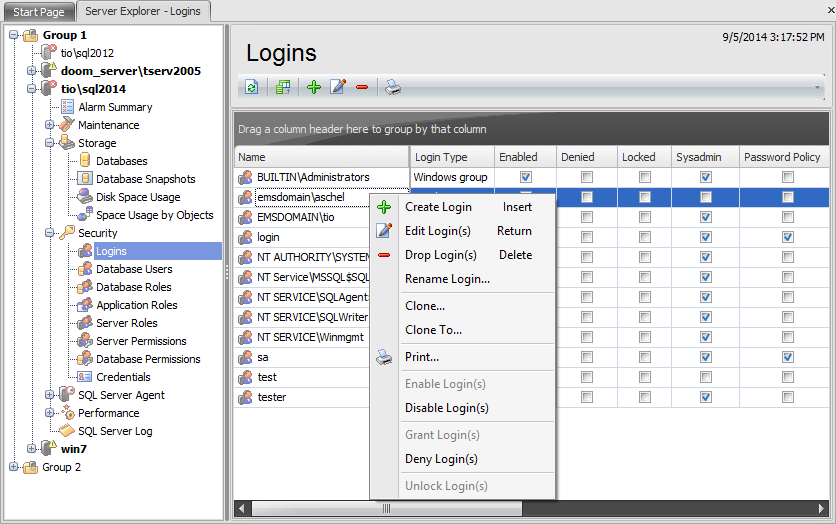Online Documentation for SQL Administrator for SQL Server
Logins
Microsoft® SQL Server™ uses two ways to validate connections to SQL Server databases:
Windows Authentication which uses Windows-level principals and SQL Server Authentication which uses logins to validate the connection.
A Login is an indivisible principal which is used to connect to the server and use its resources.
Use the context menu to:
![]() create a new login
create a new login
![]() edit the selected login(s)
edit the selected login(s)
![]() drop selected login(s)
drop selected login(s)
- rename the selected login
- create the object copy on the same server
- clone the object copy to another server
- enable/disable login
- grant/deny login(s)
- unlock login(s)
![]() create and print the report
create and print the report
Alternatively, you can use the 'Insert' button to create a login, 'Enter' button to edit login(s) and 'Delete' button to drop login(s).

The list displays the existing database logins as a grid with the following columns: Name, Login type, Enabled, Denied, Locked, Sysadmin, Password Policy, Password Expiration, Credential, Certificate, Asymmetric Key. If more convenient, you can change the order of the columns by dragging their headers horizontally. See the Working with grid section of the SQL Administrator documentation to find operations that can be performed with the grid.
To open a Login in the Login Editor, double-click it in the grid. Alternatively, you can right-click the Login alias and select the Edit Login(s) context menu item.
See also:



































































